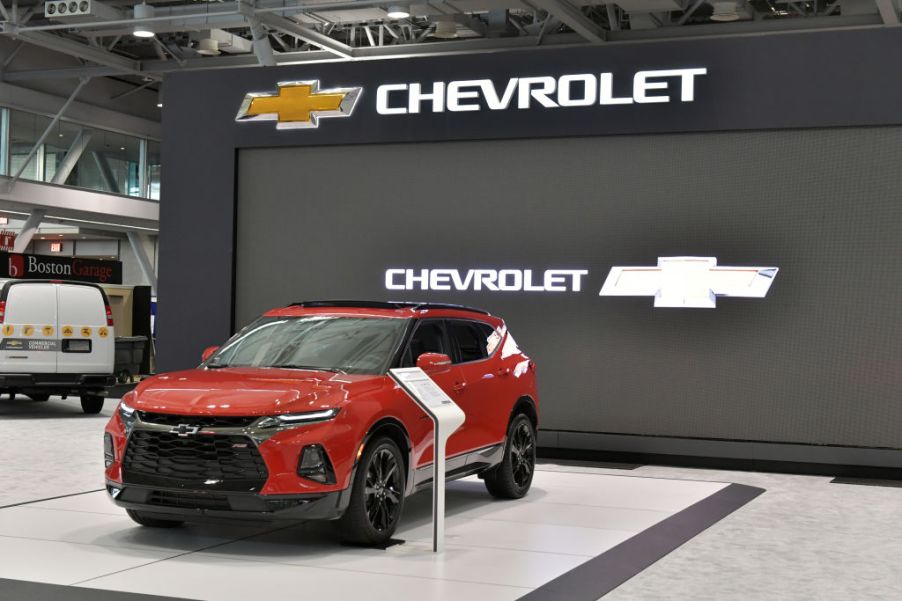
These are the GM Vehicles You Need to Avoid if You Don’t Want to Experience the Dreaded Chevy Shake
The “Chevy Shake” is the latest class-action lawsuit brought against General Motors. It alleges certain GM vehicles experience severe vibrations due to faulty aluminum driveshafts used by the automaker. It’s also alleged that GM was aware of the problem and failed to properly notify the consumers. What GM models are part of the “Chevy Shake” class-action lawsuit? What problems do consumers have as a result? What has GM done to resolve the issues?
What’s the “Chevy Shake?”
According to Top Class Actions, the primary class-action lawsuit centered around the “Chevy Shake” claims that over a dozen GM vehicles have faulty transmissions that shake when the driver shifts gears. The suit includes all U.S. consumers aside from those in Florida.
According to AutoBodyNews.com, Consumers in Florida aren’t included in the primary lawsuit because a similar separate lawsuit (Weiss v. General Motors) wasn’t granted class-action certification nationwide.
The GM vehicles in question were produced between the years 2015 and 2018. The 2016-2019 Cadillac ATS, ATS-V, CTS, CT6, and CTS-V; 2016-2019 Chevrolet Camaro; 2017-2019 Chevy Colorado; 2015-2019 Chevy Corvette; 2015-2019 Cadillac Escalade and Escalade ESV; 2015-2019 Chevy Silverado; 2017-2019 GMC Canyon; and the 2015-2019 GMC Sierra, Yukon, and Yukon XL, and Yukon Denali XL.
According to the suit, each of the named vehicles has one of two eight-speed automatic transmissions made by GM – the GM 8L90 or the GM 8L45. It goes on to say that while the vehicles are in use, if the driver accelerates or decelerates, the vehicle pauses then.
It “shakes, shudders, jerks, clunks, or ‘hard shifts'” when the transmission changes from one gear to another according to Top Class Actions. The shaking can also occur, according to the suit, when vehicles accelerate in a single gear and not just when making the shift from one gear to another.
The defect, according to several reports, makes the vehicles uncomfortable to drive. The shaking can be harsh enough to cause the driver to believe the vehicle has been struck. The onset could be enough to frighten the driver into losing control of the vehicle and crashing.
Consequences for consumers
In the class-action, one consumer bought one of the affected vehicles. He said the transmission shifted from reverse to drive so forcefully that he almost went through the door of his garage. While the potential for injury is clear, the faulty transmission also causes “financial injury” to consumers who weren’t advised the vehicles were faulty.
The lawsuit maintains that the “Chevy Shake” defect can cause the premature failure of the transmission. What causes the jerking and shaking are issues with the torque converter, the transmission, or both. Inside the problem creates excessive friction across gears, hydraulic systems, and surfaces.
As a result, the system doesn’t work the way it’s supposed to. Metal shavings from that friction are distributed through the transmission. Over time, according to the lawsuit, the metal shavings cause all sorts of problems within the transmission. Many of the components end up damaged and require replacement.
Those who bought the affected vehicles claim that GM is aware of the issue but didn’t notify them. The faulty transmissions and the automaker’s lack of action caused consumers to be out thousands of dollars. If they had known about the problems, they likely wouldn’t have bought the vehicles. If they had, they wouldn’t have paid the same amount.
Has GM addressed this issue?

The class-action maintains that instead of letting their consumers know about the issue and dangers it presents, they are burying the information so they can continue to lease and sell the vehicles.
The consumers point out that GM issued 13 “technical service bulletins” related to the transmission issue since 2015. The intention of the bulletins is to let dealerships know of the problems and offer advice on how the issue should be addressed.
Plaintiffs in the class-action say GM is not implementing solutions, and they allegedly refuse to recall the vehicles. They’re not compensating affected consumers who had to pay for costly repairs.
One owner of a 2017 Chevy Silverado 1500 experienced the “Chevy Shake” at around 25,000 miles. The plaintiff explained that the vibrations caused the center console to shake so violently from side to side that any drink in the cupholder would spill.
Another said that she paid over $1,400 to fix her affected truck but the shake continues to plague it. Her dealership reportedly told her that the shaking and vibrations were normal and shouldn’t require repair.
According to the lawsuit, the affected owners who have replaced the faulty aluminum driveshafts with custom steel versions have ceased to have further issues.


